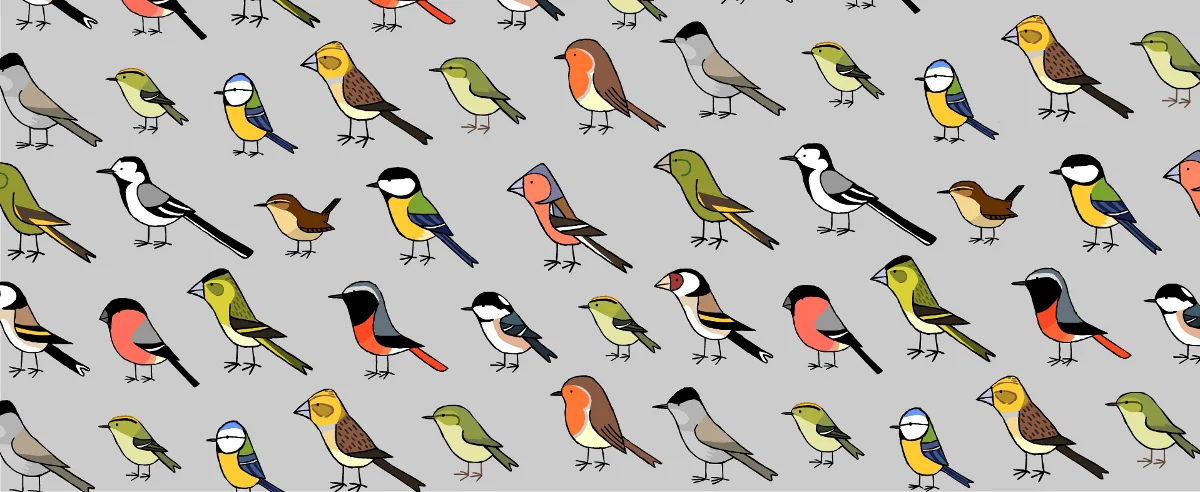Addressing Some Frequently Asked Questions
This past week at the shop, it has felt like a switch has been flipped, and the spring questions and comments we’ve come to know and expect have begun coming thick and fast. Today, let’s take a few minutes together to address several of the most common.
They’re Eating Me Out of House and Home!
If the Wood Thrush Shop had an unofficial slogan, this would certainly be it. During May and June especially, it’s not surprising to hear this 15 or more times during the course of the day. But why, seemingly all of a sudden, have they begun feeding so voraciously? No, the birds don’t just want you to come in and spend more money with us. The reason they are “eating [you] out of house and home” is because this is the time of year when the majority of songbirds are involved in the nesting process. Whether they are nest building, laying eggs, or raising young, birds expend a tremendous amount of energy and calories during the breeding season. This is the main factor causing the uptick in activity at your bird feeders. No longer are the birds simply eating enough to get them through cold nights. They are now having to take in enough calories for themselves, AND multiple offspring.
Where Are My Hummingbirds?
If you’ve been wondering where your hummingbirds are, you’re not alone. The good news is, this is apparent lack of interest at our feeders is completely normal. While yes, hummingbirds first begin to be sighted in early April, peak feeding activity is not until months later. Keep in mind, hummingbirds did not travel thousands of miles just for our sugar water. They came here for one thing, and that is to breed and raise their young. Also, hummingbird numbers are still in a state of flux as some hummingbirds begin the nesting process, while others continue migrating through on their journey to the northern parts of their range. That first hummingbird you saw a few weeks ago could be as far north as Nova Scotia by now. It is not until July, August, and September when hummingbirds have all concluded nesting and raising young that they will begin to really turn their attention to our feeders. So be patient, and take comfort in the fact that you have NOT missed out on getting to see hummingbirds, because the best activity is still ahead of us!
Male Ruby-throated Hummingbird
Photo by Eli Haislip
A Bird is Knocking on My Window… Should I Let It In?
Okay, I’ll admit, nobody as of writing this has actually asked me if they should let a bird into their house. However, we have been addressing questions regarding birds pecking at windows almost daily the last few weeks. This behavior, known as “image fighting,” is the result of birds seeing their reflection on windows or car mirrors and then fighting the perceived intruder. While the sound of a bird fluttering against our window can be annoying for us at 6 AM, we assure you, this is far worse for the bird. As far as the bird is concerned, there is a rival in its territory that will not back down, and the bird will continue to expend time and energy to fight this “intruder.” Unfortunately, the longer this continues, the more ingrained this behavior can become, causing this to continue well past the normal breeding season. Fortunately, there are things you can do to stop this. Covering the EXTERIOR of the reflective surface with something such as a piece of cardboard, towel, or sheet for a few days can typically be enough to break the bird of the habit. If the window is in a spot where this is impractical, a few balloons (I recommend those Mylar birthday balloons that hold their helium for a longer period) positioned in front of the window can also be a good method. They will catch any slight breeze, causing them to move constantly. The bird will be unlikely to want to approach these large, foreign moving objects.
A male Pine Warbler image fighting its reflection in my car’s mirror. Simply covering the mirrors when the car isn’t in use is typically enough to put a stop to this behavior.
Video by Eli Haislip


















